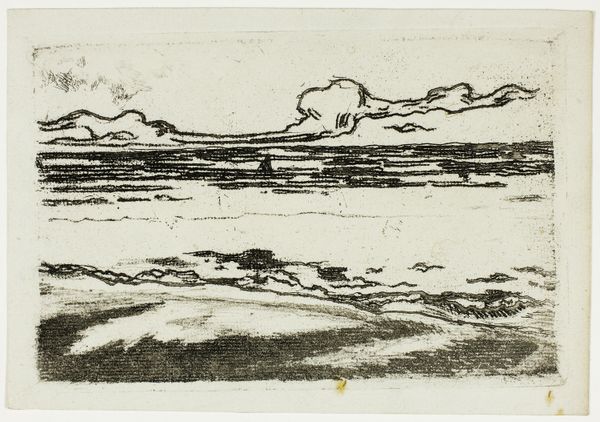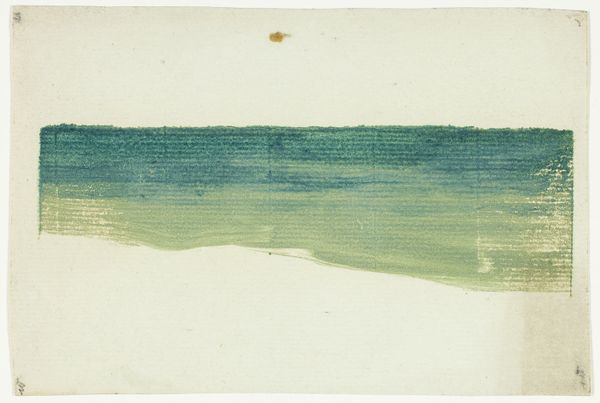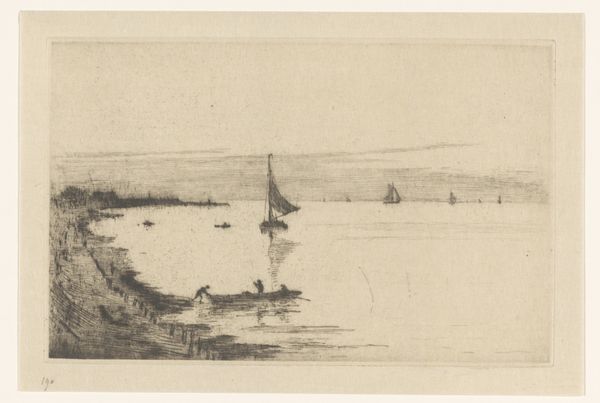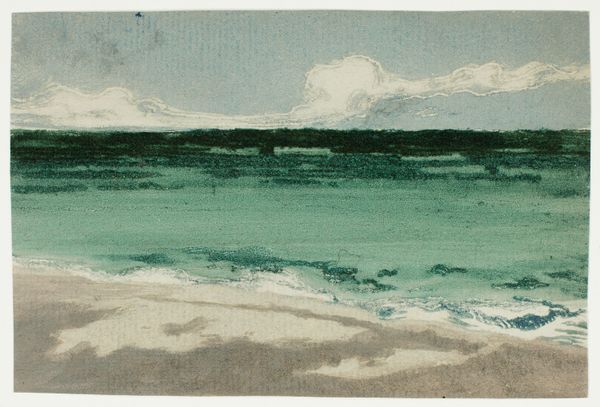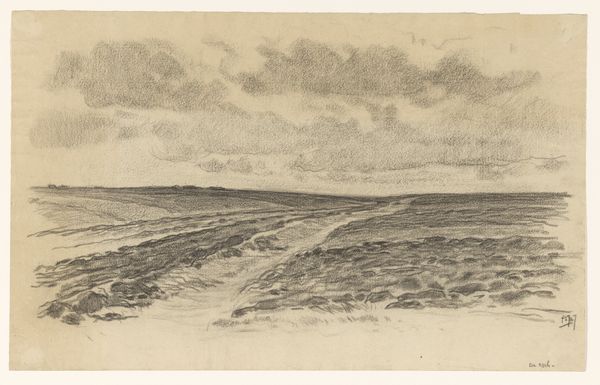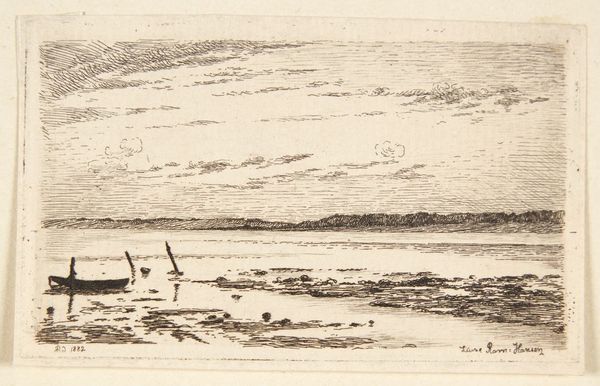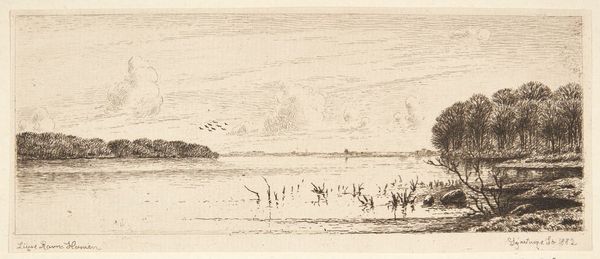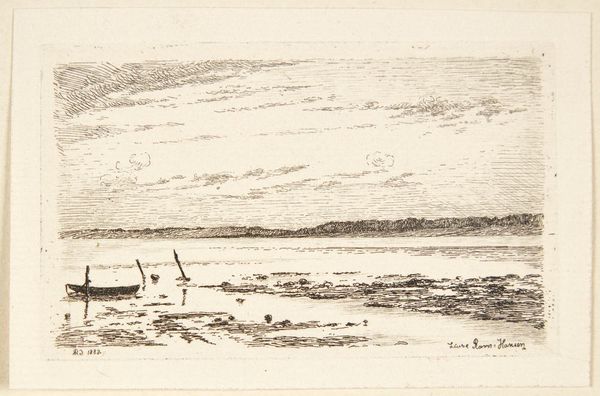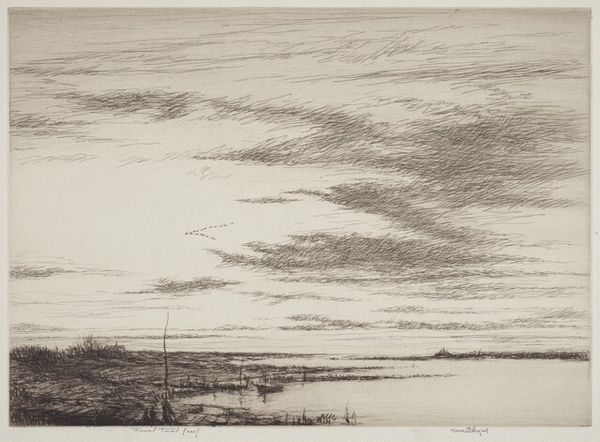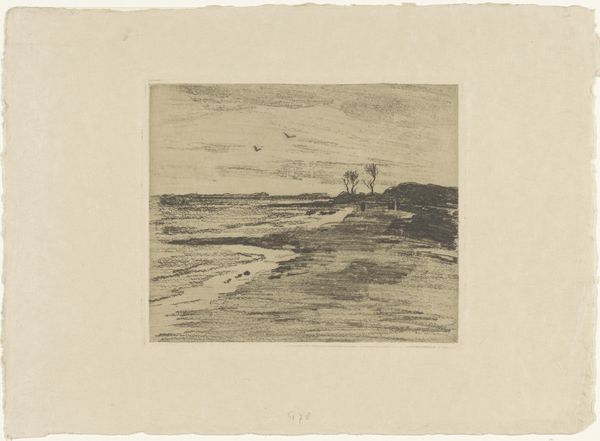
Dimensions: 75 × 141 mm (image, trimmed within platemark); 100 × 151 mm (sheet)
Copyright: Public Domain
Curator: We're looking at Theodore Roussel's 1895 print, "The Sea at Bognor," an etching on paper currently housed in The Art Institute of Chicago. What's your initial take on it? Editor: It's immediately calming, almost like a minimalist watercolor, even though it's a print. The simple horizontal composition gives it this very peaceful, meditative feel. Curator: Absolutely. Roussel’s use of line is quite deliberate here. Note the stark horizon line dividing the sky and sea, and how it almost flattens the pictorial space. The repetition of these horizontal strokes emphasizes the surface, drawing attention to the two-dimensionality of the artwork itself. Editor: But beyond the flat pictorial space, it sparks a thought about the labor and craft involved. Think about the repetitive, physical act of etching those lines into the plate—it's almost performative. It emphasizes process, moving us beyond merely the finished image toward production. The paper’s texture plays a crucial role too. Curator: Precisely! That interplay between medium and technique. Notice too how Roussel plays with color, primarily shades of blue and green, but subtly varied. It prevents the work from becoming monotonous. He utilizes the language of Impressionism. It’s there in its attempt to capture a fleeting moment, a sensory impression. Editor: I also wonder about the socio-economic factors, Bognor being a popular seaside resort. There’s an inherent tie to leisure, access, and class—things often overlooked when we simply read the image at face value. It almost challenges our conception of "high" art to also consider those enjoying the view at Bognor. Curator: That is well considered, seeing how context plays into its reception. By fracturing this scene, Roussel evokes something of the sublime while making a material statement about the very process of art-making itself. Editor: Indeed. When we look closer at “The Sea at Bognor”, it becomes more than just a pleasant seaside image; it becomes a layered examination of materials, social implications, and artistic labor. Curator: A harmonious blend, if you will, which encapsulates so many complex concepts within this simple, seemingly unassuming seascape.
Comments
No comments
Be the first to comment and join the conversation on the ultimate creative platform.
